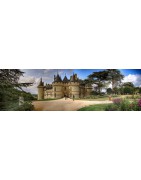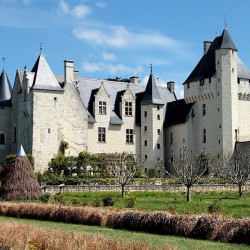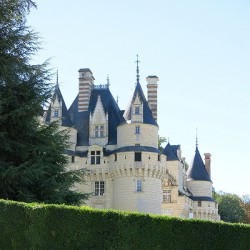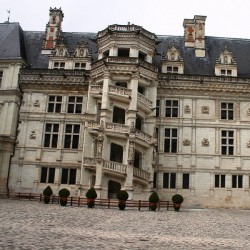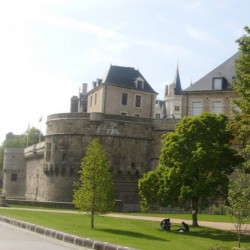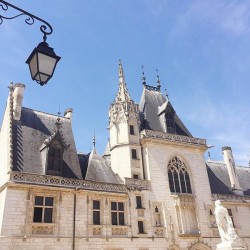Visit the castles on the Loire. Enjoy the mildness of the Touraine and its extremely rich cultural heritage.
The Loire Valley has the largest density of castles in the world. From the Hundred Year's War to modern times, the region was the center of power of the French kings Valois and the cultural center of Europe.
In addition to the castles of the Middle Ages, they built magnificent royal residences of the Renaissance.
You will not find any definite delineation of the Loire region on the maps of France. This extends between the Center-Val de Loire region and the Pays-de-la-Loire region. When we mention the Loire castles, we are talking about this part of the Loire Valley between Blois and Angers, where there is the world's largest density of castles 250 km along the river and its tributaries.
Castles were built in this region very early on. Chinon is a good example. The castle was built by the Plantagenêt, because the city had the advantage of being located halfway between the English estates on the mainland namely Normandy and the Guyenne.
The presence of the English in France played an important role for the Loire region. The occupation of northern France saw the court of the French king or Dauphin forced to settle on the Loire.
Charles VII was married to Marie von Anjou and his family-in-law and the river could provide protection from the enemy.
The castles on the Loire, such as Chinon, Blois or Amboise, became the powerhouse of France. But not only the Hundred Years War shaped the Loire Valley but also the civil war between Armagnac and Burgundy and the religious wars of the second half of the 16th century.
Unlike his father, Louis XI lived. willingly at the Loire in the castle of Loches or in Blois. From his reign until the end of the Valois dynasty, a certain French "Art de vivre" developed along the Loire. The Loire region was particularly popular for their forests, where the nobles could hunt, as in Chambord, for example, and their natural mildness without swamps.
Parallel to the wars, the Loire castles also witnessed cultural and architectural developments. With Louis XI. In the second half of the 15th century feudalism slowly ended in France. In France, the king had imposed himself as the sole ruler of his Vasssallen and should be afraid of any conflicts in their own borders. The construction of safe fortresses and castles made no sense.
With the appearance of the powder and the guns, the defensive purposes of the castles with their walls, towers and keepers were abandoned.
The castles assumed an ornemental function and became the hallmarks of the Renaissance.
The ornaments and outward play now a more important role. The Renaissance brought King Charles VIII the affable from Italy back to France. The French king then initiated the first campaigns in Italy to recapture the Duchy of Milan for the Duke of Orleans. There he decodes a new culture, a new architecture, a certain Italian "savoir vivre", which perhaps also includes the Rome of the Borgia.
Amboise Castle became the first to be transformed to the new style. Then followed the other locks.
Amboise was in the 16th century for a time the right power center of France. Catherine de Medici and her sons enjoyed the pleasant air of the Loire Valley, with no swamps and large forests.
Even today, the Loire is very popular for its nature. More and more visitors follow the wine roads or discover the numerous bicycle paths that have arisen along the river.
As well as centuries ago, tourists love the quality of life in the Loire Valley. Do you not say in French "la vie de château" to speak of the land of milk and honey? Yes, and not without reason.
After the religious wars (as in the conspiracy of Amboise in 1561) and later the Fronde, the royal power left the Loire castles, gradually establishing a center of power in the immediate vicinity of the capital, Paris.
Louis XIV, the Sun King, centralized the state power in Versailles. The hour of absolutism had struck.
Nevertheless, the Loire and its tributaries like the Cher have not been forgotten. The gardens of Villandry Castle, Valencay Castle of Talleyrand or Cheverny Castle are many proofs that the Loire castles did not remain in their remnants during Classicism.
On this page we try to offer you so many tickets for the Loire castles and to inform you about the opening times, conditions to visit or simply dates and entrance fees of the respective castles. Of course there is a lot to see. T

